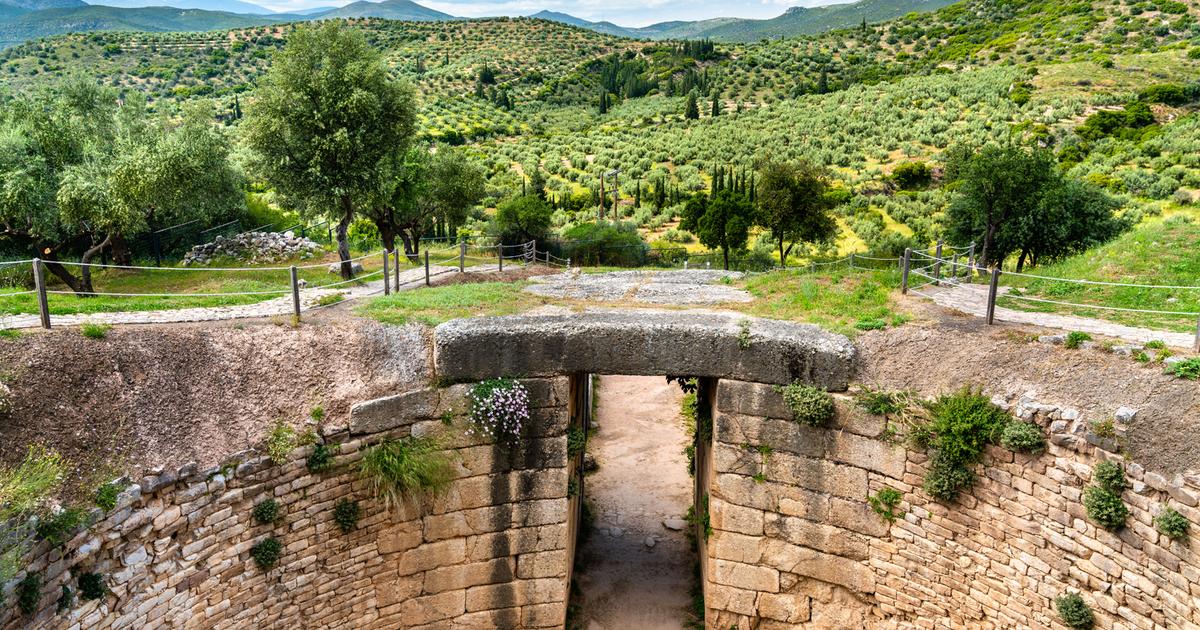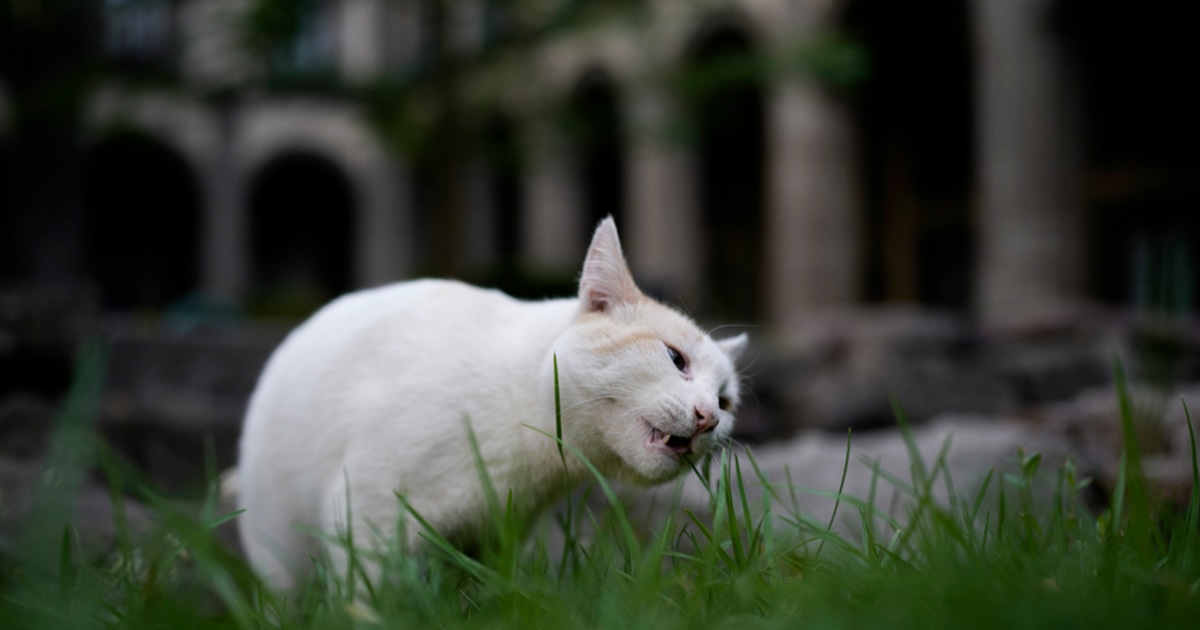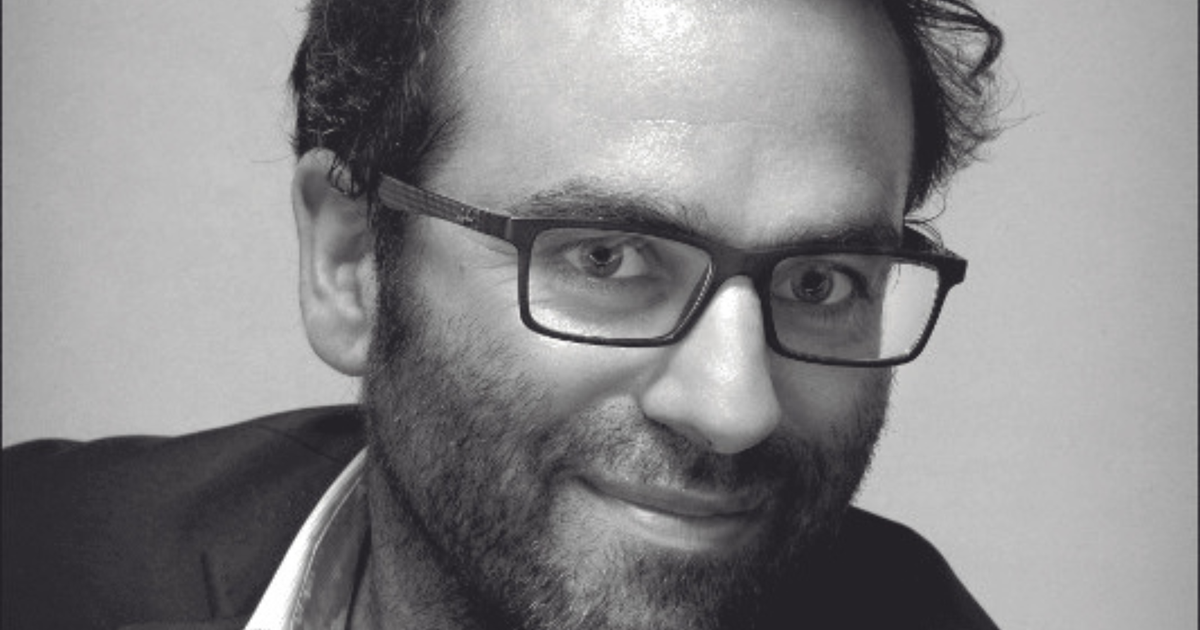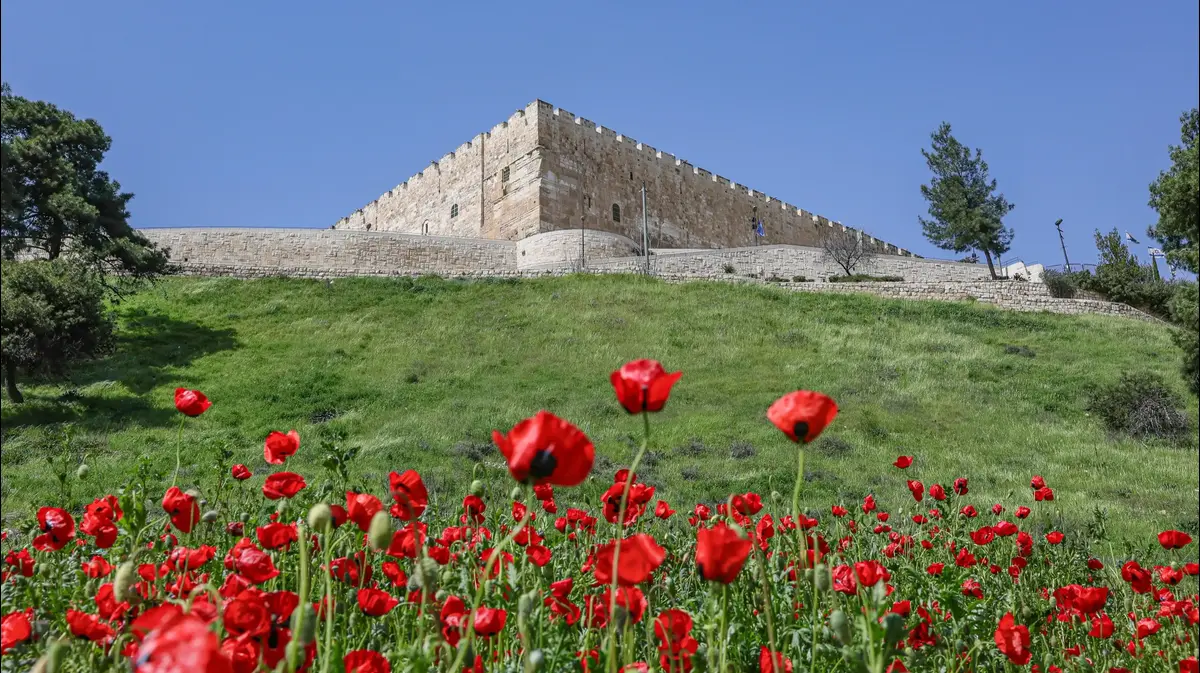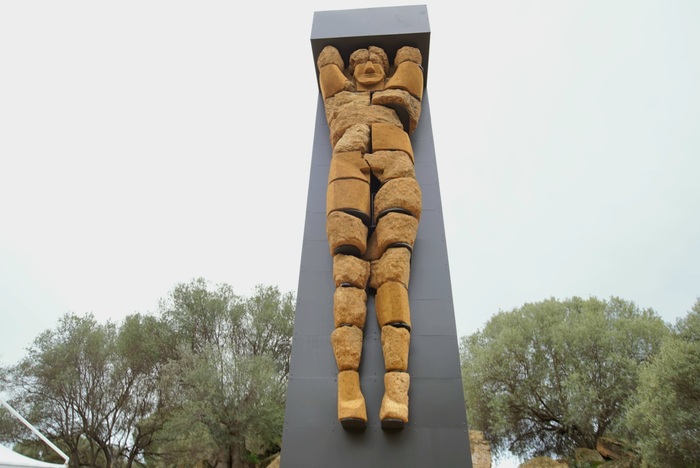Painting by French artist Lionel Royer illustrating the Emperor Augustus' historic visit to the tomb of Alexander the Great in Alexandria.
The Romans, what have they given us?
The aqueduct, the roads, irrigation, sanitation, wine, baths, public order... and tourism!
Jerry Toner, director of classical studies at Churchill College, University of Cambridge, UK, agrees.
"Yes, that's right, that too", he points out, eagerly entering the game of the funny scene from
The Life of Brian,
from Monty Python, in which Jewish opponents discuss the extent of the contributions of the Roman occupiers.
Actually, they, the unruly Jews in the film, do not include tourism among what we owe to the Romans, but they very well could have, since the phenomenon as we know it began in Ancient Rome.
Wealthy Romans traveled for pleasure from one side of the empire to the other, admiring monuments and local cuisine.
They were able to see amazing things that we barely dream about today, like the Lighthouse of Alexandria and, in the same city, the tomb and the somewhat battered body of Alexander the Great;
or dubious relics, as in the temple of Athena at Lindos in Rhodes, a cup offered by Helen of Troy that was said to be the size of her breast.
In another temple, in Sparta,
visitors were shown the cape of Ulysses and the oars of the Argonauts, no less.
And in Phocea, the clay with which Prometheus molded the first man.
Roman travelers also lived experiences with insistent guides, lousy accommodations, overcrowding and tacky souvenirs (including miniature replicas of the Parthenon) that fully fit into our current concept of tourism
low cost
.
In addition, they did graffiti on the monuments, such as the pyramids.
Irreverently paraphrasing Tacitus's Calgaco we could say: "They create a desert and call it tourism"
"Another reason why the Popular Front of Judea in
The Life of Brian
wants the Romans to leave
Romani ite domum,
as the centurion corrects the Jew who paints anti-Roman slogans) is that they were always traveling through the territories they had conquered," humorously points Toner.
“Unlike in the film, it was Roman tourists who left the graffiti behind, often with grammatical errors, as a way of marking ancient monuments, making it clear that they were under Roman control.”
Toner, well known in Spain for books such as
Infamia
(Desperta Ferro, 2020), about crime in Ancient Rome, or
Ancient World
(Turner, 2017), is the author of the recent, original and highly entertaining
Travel Guide to the Roman Empire
(Crítica, 2022), dedicated to the theme of tourism that upper-class Romans made to the conquered provinces.
In fact, the scholar is co-author of the book, since it is also signed by Marco Sidonio Falco, a high-born Roman who invented Toner and is the one who supposedly performs a Grand Tour
avant la lettre
through the empire, visiting Greece, Asia Minor, Egypt, North Africa and Carthage, Spain, Gaul and Britain (where a son of his serves on Hadrian's Wall), while the historian comments on the journey at the end from today's perspective. of each chapter and details the classical sources on which it has been based.
More information
Not only lions, bears and gladiators: dachshunds also took to the arena of the Roman Colosseum
Marco's guide explains the maps that the Romans had, the types of carriages (he travels in one with all the comforts, even a personal toilet), the roads, the inns, and the cultural and scenic landmarks.
Our Roman travels “with only the essentials”, including twenty slaves, a messenger, chef, butcher, barber and assistant.
On his long journey through the empire he travels by road and by ship (obviously there was no SPQR Air Lines).
"How hard it is to be a tourist," he writes, "endure the jostling of the crowd, the suffocating heat of summer, the hassle of beggars, and the lack of bathrooms."
Among the things he sees on his journey are great monuments but also attractions such as the Dodona oak, the
garum
(fish sauce) from Cartago Nova or the dancers from Gades.
In Troy, an essential tourist visit and where the guides put on their boots, they offer you to see the lyre of Paris.
In Judea he judges that Masada is "not worth it, unless he is interested in siege warfare."
In Egypt, he notes that Alexander the Great "today lies in a glass coffin so that you may view the preserved corpse, though it is now in a delicate state."
What we wouldn't give to have accompanied Marco on that visit!
Among our tourist's tips, be careful how you treat animals in Egypt: “A Roman visitor kicked a cat so hard that it died;
it turned out that he had killed a sacred animal and nothing could save him from the angry crowd ”.
The truth is, it is difficult not to consider the imaginary Marco someone real, made of flesh and blood, such is the authenticity with which he has been created and given the name Jerry Toner, who also lends himself to humorously pretending that his Roman colleague exists ( at least until the meeting with the praetorians sent by the emperor on his return from his trip).
The Colossi of Memnon in Luxor (Egypt).
How did the idea of collaboration come about? It must have been difficult two millennia apart in time… “I was teaching a course on Roman slavery and I was looking for a way to make students understand how normal slaves were in the ancient world .
Obviously, we feel an instinctive horror but the Roman sources give us a completely different point of view.
Putting those fonts in the voice of a fictional character was a way to bring them to life and make them more accessible.”
The fact is that in the guide, Marco explains his trip with practical information and recommendations and at the same time offers us a portrait of what he was like and how a member of the imperial elite thought and acted.
Marco Sidonio is generally a good travel companion, but he has unpleasant aspects.
Was that necessary to show the abominable face of the Roman upper class?
"Absolutely.
In a sense, he is a metaphor for Rome itself.
We cannot but be impressed by the buildings and cultural achievements, but we must always remember that there was a much darker side to the Roman world."
Marco is educated, intelligent and sensitive to the beauty of the monuments and landscapes, but arrogant, he believes he is superior and does not question at all the subjection by force of the peoples to Rome,
their right to take what they want and the legitimacy of slavery.
He is insensitive to the terrible spectacle of a group of recently crucified Christians on the road from Palestine to Egypt (he converses with one of them and has his legs broken to shorten his suffering, less out of pity than because his slaves moved to ask him to). ).
At another time, traveling through northern Gaul, he passes by an abandoned baby.
"Slave traders or dogs will soon take care of him," he notes.
Traveling through northern Gaul, he passes in front of an abandoned baby.
"Slave traders or dogs will soon take care of him," he notes.
Traveling through northern Gaul, he passes in front of an abandoned baby.
"Slave traders or dogs will soon take care of him," he notes.
On the other hand, the trip with Marco is an immersion in what it meant to travel for pleasure at the height of the Roman Empire.
Toner does not specify the exact moment and there are references to different emperors.
"Marcus is reluctant to say exactly what years he lives in, but what he sees and how he thinks reflects the High Empire times of the second century AD, that time Gibbon hailed as the period in world history when the condition of the humanity was happier and more prosperous, a time also in which trade and travel were at their highest level.
Can it be said that the concept of tourism really existed in Ancient Rome?
How was it different or similar to ours?
“The long period known as the Roman peace, the Pax Romana, made travel relatively safe, available, and affordable,” Toner explains.
“That caused a lot of people to travel for leisure purposes in a way comparable to the modern world.
What was different was the number of people involved - there was not the kind of mass tourism we have today and only the wealthy could afford to take a tour of the sights of Greece and Egypt.
But large groups often traveled for religious reasons, for example to attend the Games that took place as part of the great festival at Olympia, where tens of thousands of people made an arduous journey.
Reconstruction of the Zeus of Phidias in the temple of the god in Olympia.
It is tempting to compare the journey of Marco and his ilk to the Grand Tour, that custom of wealthy Europeans in the 18th and 19th centuries to travel across the continent to, especially, admire art.
“For the wealthy Romans, taking a tour of the highlights of the East was one of the benefits of empire, a way to derive pleasure from the places they had conquered.
They used to go to the same places—the great temples of Greece, the pyramids, the huge cities of Antioch and Alexandria—in a very similar way to the Grand Tour that later European aristocrats did.
The wealthy also sent their young men to learn the skills of oratory at the grand schools in Greece, something that reflects the same kind of reverence for the classical past that we find in the early modern age.”
What would surprise us most about traveling in the days of Ancient Rome?
“I think the amount of travel that fostered the stability of the Roman empire,” replies Jerry Toner.
“Imperial agents and officials would go out to perform governmental tasks and oversee important projects, while soldiers would travel to wherever they were stationed.
Wealthy landowners would travel to oversee their estates (we see that Marco has them even in Tarraco), trade prospered, and merchants transported their wares to markets throughout the empire.
Animals were imported for the amphitheater.
Artists and artisans went to where the work was, and all kinds of street entertainers, fortune tellers and religious people went through the towns in search of an audience,
while the sick flocked to renowned healing centers and shrines for cures.
The famous road network, though mainly for military use, also encouraged travel.
All these travelers brought their cultures and the result was that many cities acquired a high degree of cosmopolitanism.
People also brought their gods with them, and the religions of the eastern part of the empire introduced new forms of religious experience to Rome that were very different from the traditional pantheon.
I think we would also be very surprised by the indifference of the Romans towards the suffering of so many and their inordinate arrogance towards people from the provinces.
The empire forced many to travel.
The crushing of revolts such as that of the Jews led to the displacement of entire towns.
Members of a historical reconstruction group tour Hadrian's Wall.GETTY
We see in Marco's trip that alongside Stendhal's pleasures and syndromes there were drawbacks and dangers.
What was the worst thing about traveling then?
“There were all the hassles we associate with travel today: delays, low-quality accommodation, bad food, and bed bugs.
But the greatest dangers by far were shipwrecks and bandits.
We have some old accounts that show, as Marco does, what a terrible experience it was to be at sea aboard a ship in a storm.
Banditry seems to have been a very common problem.
Epictetus warns travelers not to venture alone along a road, but to travel in company, with bodyguards if possible.
Sparsely populated areas were clearly more dangerous, and any civil war resulted in defeated or deserted soldiers turning to banditry to survive.
Some travelers just disappeared.
Pliny the Younger describes how the nobles Robustus and Metilius Crispus vanished without a trace, though they might have been murdered by their own slaves.
In his guide, Marco Sidonio suggests that apart from those inconveniences inherent to the trip, something similar to adventure tourism already existed.
“Indeed, an example was the rapids of the upper Nile. Tourists asked the boatmen to take them around on the rafts and the bravest could navigate these rough waters on their own, just like in today's rafting.
One traveler known to have practiced this extreme water sport was the Greek intellectual Aelius Aristides.
There was also
dark tourism
, dark tourism, like attending the traditional lashes that were inflicted on the boys at their initiations in Sparta.
Curiously, Marco talks little about sex tourism and in fact, except for the occasion when he is mistakenly put up in a brothel, he reveals little about his erotic experiences along the way.
From traveling in Marco's time, what should we not have missed?
Jerry Toner points out a few things, most of which have disappeared or lost their original splendor.
“To begin with, there is the architecture: the wonderful theatres, arches, public baths, bridges and aqueducts, all of them proof of a prosperity that had not been seen before.
The populous cities of the East almost rivaled Rome in size and diversity, and had markets where it was possible to purchase the most exotic and luxurious goods, such as spices from India and silks from China.
The great temples were also worth seeing.
Shrines acquired vast quantities of valuable objects as donations from grateful worshipers, in a process similar to that later done in cathedrals.
So much has been lost that it's hard to know where to start.
I would love to see the vanished masterpieces of ancient art, like the colossal chrysoelephantine [gold and ivory] statue of Zeus by Phidias at Olympia, one of the seven wonders of the ancient world;
and Mirón's bronze cow.
Also being able to be part of the crowd at one of the big festivals.
And to have heard the statue of the god Memnon speak, who was believed to greet his mother, the Aurora, every morning with a strange crackling noise of the air passing through the cracks in it.
You can still see the statue in Luxor, but Emperor Septimius Severus restored it and as a result the statue stopped speaking, which was disastrous for local tourism."
one of the seven wonders of the ancient world;
and Mirón's bronze cow.
Also being able to be part of the crowd at one of the big festivals.
And to have heard the statue of the god Memnon speak, who was believed to greet his mother, the Aurora, every morning with a strange crackling noise of the air passing through the cracks in it.
You can still see the statue in Luxor, but Emperor Septimius Severus restored it and as a result the statue stopped speaking, which was disastrous for local tourism."
one of the seven wonders of the ancient world;
and Mirón's bronze cow.
Also being able to be part of the crowd at one of the big festivals.
And to have heard the statue of the god Memnon speak, who was believed to greet his mother, the Aurora, every morning with a strange crackling noise of the air passing through the cracks in it.
You can still see the statue in Luxor, but Emperor Septimius Severus restored it and as a result the statue stopped speaking, which was disastrous for local tourism."
Our Marco Sidonius listens fascinated to sing to the statue, one of the Colossi of Memnon (actually statues of Amenhotep III), and, like many real Roman tourists, engraves a graffiti on its legs.
Among those who left his name there is Emperor Hadrian himself, who allowed himself a luxury cruise with his lover Antinous, who had some complaint about the trip.
Marco also visits the pharaonic tombs (in the Valley of the Kings there are more than two thousand graffiti from classical antiquity) and takes small vials with Nile water as souvenirs from Egypt, something that Juvenal believes Roman tourists used to do.
A Roman patrician visits monuments in a period painting.
It is necessary to wonder if Roman tourists like Marco had the capacity to know the world scientifically or were highly mediated by the mythological connotations of their thought.
“The ancients made no distinction between the legendary and the historical past,” Toner stresses.
“Roman tourists were certainly not only interested in the physical sights.
The accounts they left of their travels contain lengthy mythological excursions connected to each location, along with the history, logistics of their journey, and musings on all sorts of other issues.
They were a kind of Baedeker [by the famous German publisher guides] of the ancient world.”
In Marco Sidonio Falco, whom Toner has made the protagonist of two other books in addition to the guide (
How to handle your slaves
, published by La Esfera de los Libros in 2016, and
Free your inner Roman),
the name of another famous Roman resonates fiction, detective Marco Didio Falco, the unforgettable character from Lindsey Davis's mystery novels.
It is a tribute?
“I have read the novels, and I highly recommend them, but there was no conscious nod to the name.
A
falx
was a small curved dagger with an edge on the inside, like a sickle (hence the Iberian falcata swords and the Dacian
falx
), and he wanted a name that would make sense of Rome's tougher side.
On the other hand,
falx
also hinted
falsus
and that Marco was a fictitious character”.
As a specialist in the Roman world and author of a wonderful book on the amphitheater and gladiators —
The Day Commodus Killed a Rhino: understanding the Roman games
(Johns Hopkins University Press, 2014) — what does Jerry Toner think of the long-awaited return of
Gladiator
? ?
“I love the first movie.
True, there were some historical inaccuracies, but that's Hollywood after all.
I'm concerned that the sequel will struggle to make the same impact, particularly as we'll be entering the lesser-known, messy period of the Grim, but I'd love to be wrong!

/cloudfront-eu-central-1.images.arcpublishing.com/prisa/VQGCRS2PKJCPHLGB3QONHG5K4Y.webp)

